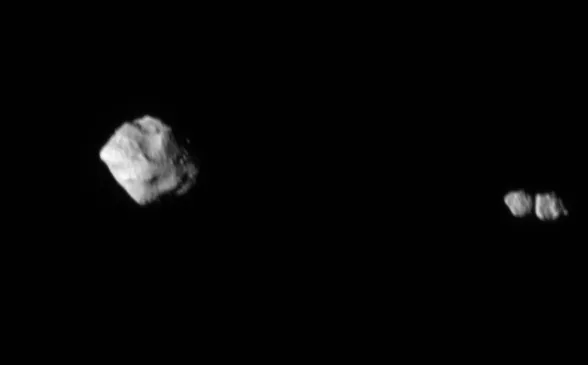
Credit: NASA/Goddard/SwRI/Johns Hopkins APL
Lucy is the first spacecraft designed to fly to the Jupiter Trojans, with specific targets including DonaldJohanson (April 20, 2025), Eurybates with its satellite Queta (April 12, 2027), Polymele with its satellite (September 15, 2027), Leucus (April 18, 2028), Orus (November 11, 2028), and finally, Patroclus with its satellite Menoetius (March 3, 2033). Prior to these encounters, the spacecraft passed by the asteroid Dinkinesh and its satellite (November 1, 2023), which is not classified as a Jupiter Trojan. The exploration of this significant number of asteroids during Lucy's 12-year mission is unusually extensive and is expected to provide valuable insights into the formation of our solar system.
Unlike the other six asteroids, Dinkinesh was not initially planned as part of the mission. Its inclusion was a result of its late discovery and its fortuitous alignment with the spacecraft's trajectory due to its small size. The asteroid was intended more as a test for the probe rather than a source of groundbreaking discoveries. However, the approximately 800m diameter body revealed a surprise when the spacecraft's images unveiled an previously unknown satellite, which itself is a "Contact-Binary".
The Trojans, Lucy's primary targets, are asteroids that accompany Jupiter along its orbit around the sun, congregating in two "swarms" located in the gas giant's Lagrange points. Scientists hope that Lucy's data on these objects from the early stages of our solar system will contribute to unraveling the mysteries surrounding the formation and early development of the solar system. To reach its numerous targets, Lucy will perform three gravity assists by flying past Earth, allowing it to gain momentum and return to its intended trajectory towards the Trojans.